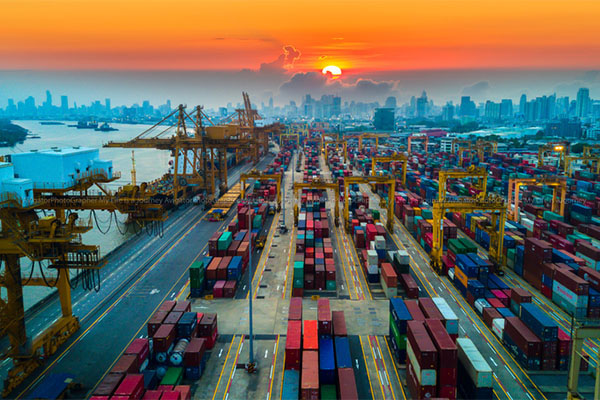Strong import gains remain forecasted through the summer, reports Port Tracker
The ongoing theme of elevated levels of United States-bound retail container imports remained fully intact in the new edition of the Port Tracker report released today by the National Retail Federation (NRF) and maritime consultancy Hackett Associates.
The ports surveyed in the report include: Los Angeles/Long Beach; Oakland; Tacoma; Seattle; Houston; New York/New Jersey; Hampton Roads; Charleston, and Savannah; Miami; Jacksonville; and Fort Lauderdale, Fla.-based Port Everglades.
Authors of the report explained that cargo import numbers do not correlate directly with retail sales or employment because they count only the number of cargo containers brought into the country, not the value of the merchandise inside them, adding that the amount of merchandise imported provides a rough barometer of retailers’ expectations.
While the previous edition of Port Tracker observed that U.S.-bound retail container imports are expected to “grow dramatically” over the first half of the year, the forecast, in the new report, pointed to the import surge now extending through the summer months, with retailers focused on meeting high levels of consumer demand. And it added that going back to August 2020, when U.S.-bound retail container imports came in at 2.1 million TEU (Twenty-Foot Equivalent Units), setting a record at the time, and coming five months after falling to the lowest level in four years, at 1.37 million TEU, in March 2021, import growth has remained strong and peaked at 2.21 million TEU in October 2020.
What’s more, the report is calling for volumes to remain at or above the 2 million TEU range for 11 of 13 months through August 2021, whereas that level had previously only hit the 2 million TEU mark only one month, in October 2018. And, as LM has reported, this spate of imports resulted in months-long U.S. port backups, coupled with ports dealing with COVID-19-related infections and equipment (mostly containers) shortages, due to high import volumes and also issues related to the Suez Canal disruption.
“We’ve never seen imports at this high a level for such an extended period of time,” NRF Vice President for Supply Chain and Customs Policy Jonathan Gold said in a statement. “Records have been broken multiple times and near-record numbers are happening almost every month. Between federal stimulus checks and money saved by staying home for the better part of a year, consumers have money in their pockets and they’re spending it with retailers as fast as retailers can stock their shelves.”
Port Tracker reported for February, the most recent month for which data is available, U.S-based retail container ports handled 1.87 million TEU, a 9.1% decrease from January and a 23.7% annual gain, as well as the highest-volume for February going back to when NRF initially began tracking import volumes in 2002. The report stated that due to the impact of the pandemic annual import volume percentage comparisons are distorted, with Asian factories remaining closed after the 2020 Lunar New Year and U.S. businesses locking down at the same time, too.
March is pegged to hit 2.07 million TEU, for a 50.7% annual increase, with April, at 1.99 million TEU, for a 23.4% annual increase, and May at 2 million TEU, for a 30.6% annual gain. For the summer months, June is estimated to hit 2.01 million TEU, for a 24.9% annual increase, with July and August, at 2.04 million TEU (a 6.5% annual increase) and 2.08 million TEU (a 1.2% decrease, for the first decline since July 2020), respectively.
“[C]ongestion at the west coast ports is abating as container carriers and terminals adjust to the new normal,” wrote Hackett Associates Founder Ben Hackett in the report. “Despite a decline in volume from January, we saw the busiest February on record as the ports worked to clear the backlog, and the number of container ships at anchor in San Pedro Bay waiting to dock at Los Angeles and Long Beach is dropping, reportedly down to 17. On the demand side, March looks to remain resilient with strong month-on-month cargo growth as well as year-on-year growth. April-June growth should be relatively robust before the expected slowdown in growth rates in the second half of the year.”
For all of 2021, Port Tracker is calling for volumes to be up 7.9% annually, with West Coast port volumes slated to see an 8.4% annual gain.













